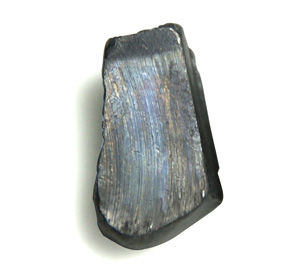Lead
| EPA Maximum Contaminant Level Goal (MCLG) |
0.015 mg/L |

Lead is a toxic metal that was regularly used in a wide range of household and industrial products throughout much of the last century, and found in plumbing and service lines until the EPA established a lead ban in 1986.
Lead rarely occurs naturally in water. When found, it is usually a result of industrial, smelting or mining wastes, or from corrosion of plumbing.
Health Effects of Lead
Lead is toxic to all humans, but the risk of lead poisoning is highest in children and pregnant women. Children absorb 30-75%, adults only 11 percent.
The EPA lists several symptoms associated with acute lead poisoning:
Lead can cause a variety of adverse health effects when people are exposed to it at levels above the action level [15 parts per billion] for relatively short periods of time. These effects may include interference with red blood cell chemistry, delays in normal physical and mental development in babies and young children, slight deficits in the attention span, hearing, and learning abilities of children, and slight increases in the blood pressure of some adults.
The agency also warns that lead is a potential carcinogen, and can lead to kidney disease or stroke with long term exposure.
Water Treatment for Lead
Lead can be treated with ion exchange (water softeners) or reverse osmosis. It can also be treated by removing the source, or through corrosion control methods in pipes, including: pH and alkalinity adjustment; calcium adjustment; silica or phosphate-based corrosion inhibition.
Sources: EPA, Water Technology Magazine Volume 31, Issue 8 - August 2008. Photo: images-of-elements.com
Site Index
Filtration Systems
- Aeration for Iron & Sulfide
- Backwashing Filters
(whole house & well units)
- Chlorine & Chemical Injectors
- Countertop Water Filters
- Garden Hose Filters
- Reverse Osmosis, Residential
- Reverse Osmosis, Commercial
- Shower Filters
- Specialty Filters
- Ultraviolet Systems
- Undersink Filters
- Water Softeners
- Whole House Filters
Cartridges
Parts
- Replacement Parts
- Faucets
- Filter Media
- Fittings
- Housings
- O-rings
- Pumps
- Pura UV
- R.O. Parts
- R.O. Tanks
- R.O. Booster Pump
- VIQUA UV